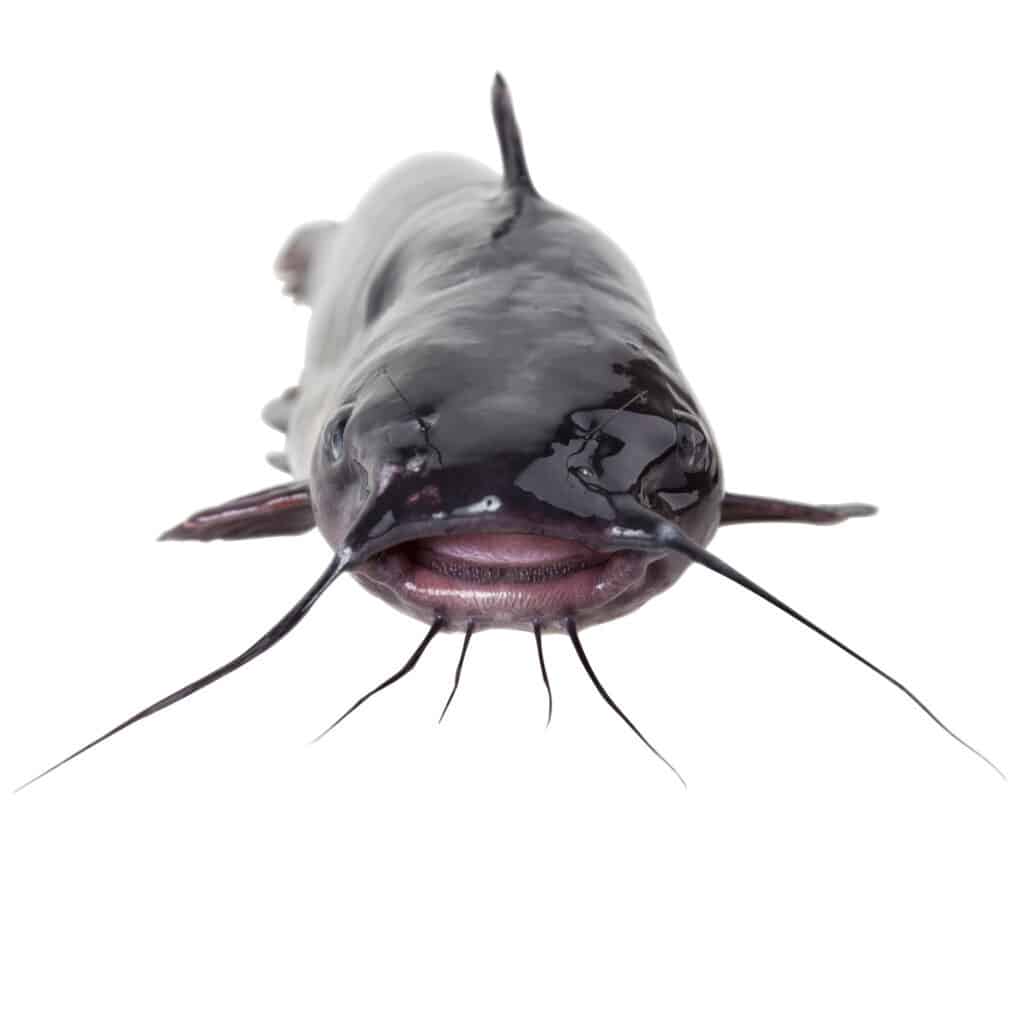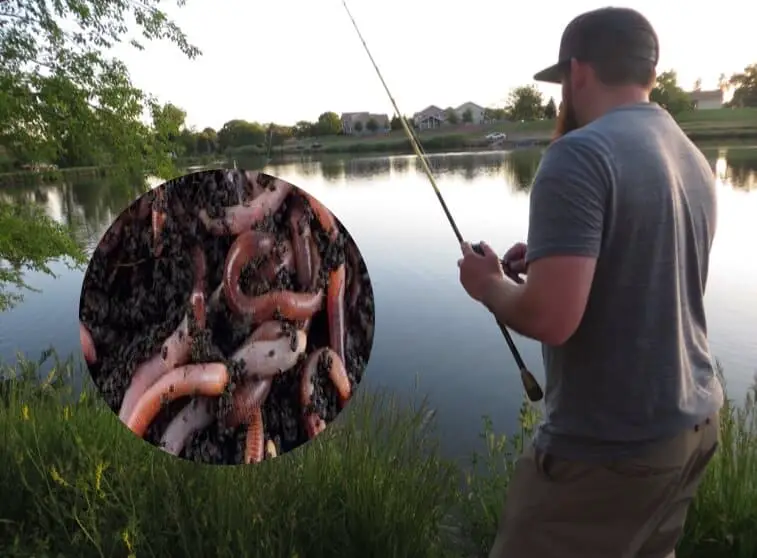Have you ever gone fishing for catfish, grabbed a handful of nightcrawlers, popped them on your hook, wound up for the cast, and as you were letting fly, wondered to yourself, “have I just wasted my time using these buggers?” Well, I’m going to take a closer look at if you can catch catfish with nightcrawlers!
Catfish can be caught while using nightcrawlers as bait. Not only are catfish opportunistic feeders and will eat practically anything, but worms are a surprisingly good bait for most fish; they are easy to swallow, release a natural scent, and make a lot of movement in the water.
Okay, so we know we can catch catfish using nightcrawlers, but do they actually like them? And are there any particular strategies to follow when using nightcrawlers for catfishing?
Do Catfish Like Nightcrawlers?
Catfish can be caught on nightcrawlers because they do enjoy eating said nightcrawlers. Not the most groundbreaking statement ever written, but it is worth remembering the next time you have a fishing trip planned and can’t decide on what bait to bring.
Nightcrawlers are great for catching a variety of fish and, in general, to use as bait. Some of the reasons behind this are because:
- Nightcrawlers move while in the water. This movement sends out vibrations in the water, which fish pick up on and then come in for a closer inspection. This movement is something synthetic lures try to replicate. With nightcrawlers (and other live bait), you’re getting it for free!
- Nightcrawlers produce pheromones and other smells, which then alert catfish that there is food close by.
- Nightcrawlers are easy to collect and keep. You can purchase commercially “produced” nightcrawlers from bait shops, dig in your garden, or at the fishing destination; you can even start your own worm farm. To keep nightcrawlers (as bait), all you really need to do is place them in the refrigerator. Provided you slowly warm them up again, they will be perfect to use once at the destination.
- Nightcrawlers are cheaper than synthetic lures and they require no other smells to be added. Simply hook them up, and you are ready to go.

If we look at catfish specifically:
The three most popularly caught catfish in the U.S of A are channel catfish, blue catfish and flathead catfish. So we will focus on these three.
Channel catfish
These are the smallest of the three, reaching an average size of 24 inches and 30-40 pounds. Channel catfish are often caught using worms or chicken livers. They are mostly bottom-feeding fish, so dangling a worm close to the bed would put it in the firing line of a channel cat.
Blue catfish
Blue catfish are the largest of the three, with a record size of 143 pounds! For the most part, blue catfish grow to around 40 pounds as well.
These fish, although also generalists when it comes to eating, are not usually caught with nightcrawlers. They tend to prefer fish like shad. That said, there are anglers out there who successfully catch blue catfish with nightcrawlers, especially when using multiple on one hook.
Flathead catfish
Flathead catfish can also reach up to 100 pounds in weight, but, on average, you are looking at around 40 pounds as well. Although these flatheads are also considered to prefer fish as bait (especially the bigger specimens), there are still many anglers who recommend using nightcrawlers, although the number of nightcrawlers that you cram onto the hook will play a role in deciding if you will get a bite or not.
Larger fish will generally tend not to be as effectively caught while using worms (even if you put a whole glob of them onto your hook), as they more readily take live bait in the form of smaller fish. However, the possibility cannot be completely ruled out! But, for “normal” sized fish, nightcrawlers are perfect. Other species of catfish also have an affinity for nightcrawlers. These include most species of bullhead catfish (white, yellow and black) and headwater catfish. These are, however, less popular in terms of angling.
Useful Tips When Using Nightcrawlers For Catfish
Collecting:
When collecting night crawlers, there are a few options available. Firstly, you can purchase them from the local bait shop (yes, that counts as collecting!).
Nightcrawlers generally are more active at night (hence the name), so that would be a great time to hunt for them.
Take care to “dampen” your torchlight (they are highly sensitive to light, so you need to reduce the intensity of the torch) by either using red cellophane or by shinning the light onto your hand/between your fingers.
Another good time to collect nightcrawlers is just after it has rained, as they move to the surface to feed. By spraying an area the day before your fishing trip, you will set yourself up for a bountiful harvest the next morning.
Keeping:
Once collected, it is important to store the nightcrawlers in a way that will preserve them. Depending on how soon before your fishing trip you begin collecting, you can put them into boxes filled with worm bedding (Doc’s Champion Worm bedding, for example).
These boxes then need to be kept at around 40-60 degrees Fahrenheit.
To cull off any sick worms, place the nightcrawlers on top of the pre-wet bedding and leave the box in an area that is well lit. After a few hours, check on the box, and any worms that have not burrowed into the bedding should be removed and discarded.
After about ten days, the organic food in the worm bedding would have been eaten, to which you can add a small amount of cornmeal as replacement food.
When you need to use these worms, transport them in a container that can be placed in a cooler. Make sure to add ice to the cooler so that the worms don’t overheat.
Rigging and techniques:
Although there will be some variations, depending on what type of catfish you are targeting, the area you are fishing in and the season, below are some rig setups and techniques to help you on your way:
For catfish, you have a few choices in hooks. You can use an octopus hook, a treble hook, or a jig head. You can opt for one, two, or even a gob of as many nightcrawlers as will fit on the hook. This depends on the size of fish you are targeting.
Some popular rigs are:
Bobber rig: hook the nightcrawler two to three times through the hook, then cast in and wait. Especially effective during the spawning season (June) when you need to drop a gob of nightcrawlers between rocks, where the catfish go to spawn.
Split-shot rig: Hook the nightcrawler four to five times through the hook. This is effective for warmer temperatures when the catfish have moved to the bottom of the river. Similarly, the use of an egg sinker in a slip shot rig is also a popular option.
A Carolina rig also works well when targeting catfish along the bottom while presenting the nightcrawler just off the bed. This is a popular option for a slow retrieval of the bait.
Smaller catfish tend to hang around rocks, logs, crevices and the like, so slowly moving through these areas is a great place to start. If you’re in an area and you don’t get a bite after 15 minutes, then it’s time to move further along.
Larger catfish are generally on the hunt, so if you see a school of baitfish, there is a chance a big flathead or blue may be on their tail. Blue catfish can also be found in deeper water (especially as temperatures rise).
Nightcrawlers Vs. Other Baits
Catfish are not picky eaters. Different species will have different preferences, and different sized fish will have different levels of interest in your bait, depending on what you use, of course.
That being said, the top-ranked baits for catfish are:
| Bait | Pros | Cons |
| Nightcrawlers | cheap easy to collect great for normal-sized catfish | Other fish enjoy them as well |
| Gizzard Shad | Well distributed Easy to catch with a cast net | Attracts other fish too |
| Skipjack Herring | Very effective for big blue catfish | Not as widespread as some baitfish |
| Stink bait | Very effective for channel and blue catfish The use attracts more catfish to the area | Bad smell |
Conclusion
As simple as it may seem, nightcrawlers can be as effective as any synthetic lure or other live bait. All you need is a bit of practice and patience. With so many positives in cost, keeping, and effectiveness, nightcrawlers definitely get my and many others’ vote as preferred catfish bait.

